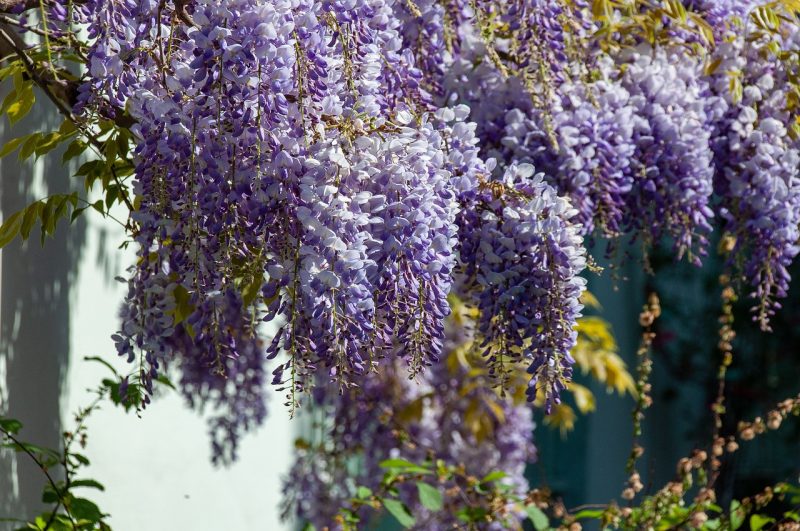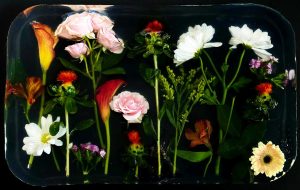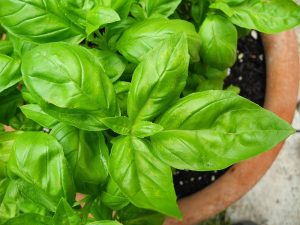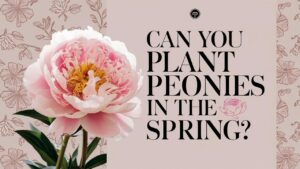Creating a drought-tolerant Mediterranean garden is an excellent way to not only conserve water but also to cultivate a serene and fragrant outdoor space. Among the various types of plants suited for such gardens, flowering plants play a significant role in introducing color and texture.
Lavender
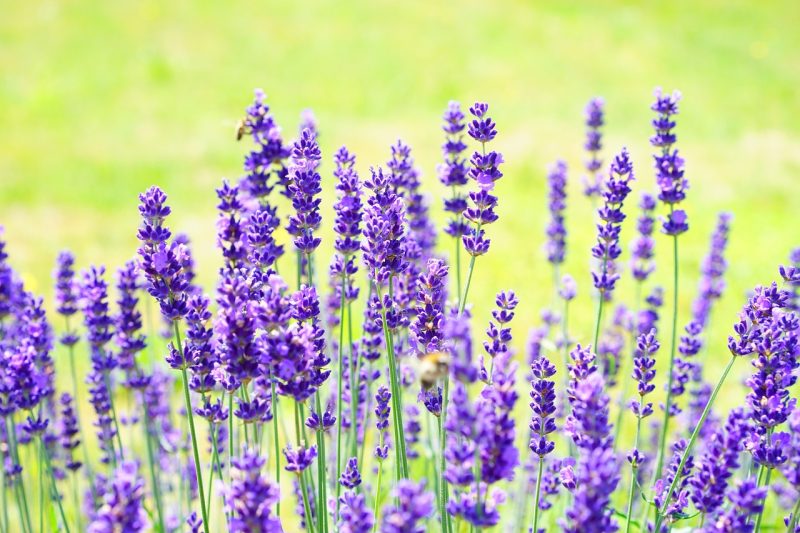
Lavender (Lavandula spp.) is arguably one of the quintessential plants that embodies the essence of the Mediterranean landscape. Known for its striking purple blooms and delightful fragrance, lavender is more than just a pretty face. This perennial herb is incredibly drought-resistant due to its deep root system, which allows it to access moisture from the soil layers that many shallower-rooted plants cannot reach.
When choosing lavender for your garden, consider the variety that best suits your climate and landscape. English lavender (Lavandula angustifolia) is favored for its compact growth and aromatic flowers that are invaluable for attracting pollinators. Conversely, Spanish or French lavender (Lavandula stoechas and Lavandula dentata) has a more exotic appearance with its unusual flower spikes, featuring fluffy, tuft-like bracts.
Lavender thrives in well-draining soil and requires full sun to flourish. This makes it an ideal candidate for rocky terrains or sandy areas that mimic its natural habitat. It’s worth noting that lavender prefers lean soil, so avoid excessive fertilization, which can lead to reduced flowering and growth. Once established, it requires minimal watering, making it a sustainable choice for gardeners looking to create eco-friendly landscapes. Additionally, lavender is renowned for its aromatic oils, which provide therapeutic benefits and have been used in aromatherapy and cooking. Thus, planting lavender can enhance not just the aesthetics of your garden but also offer practical uses.
Rosemary
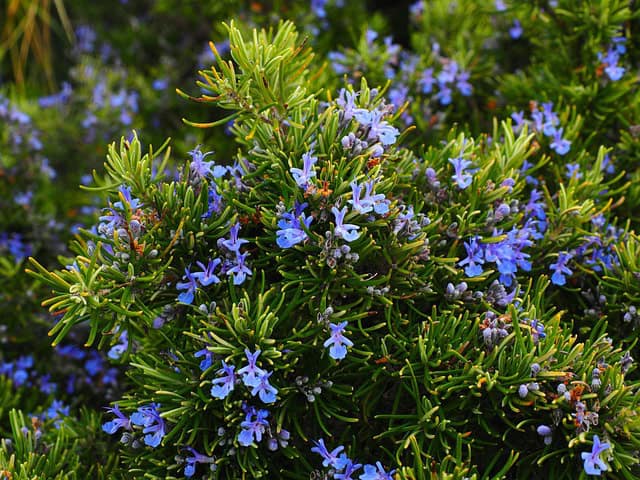
Another iconic Mediterranean plant that champions drought tolerance is rosemary (Rosmarinus officinalis). This woody perennial herb is as versatile in the kitchen as it is beautiful in the garden. With its evergreen foliage, rosemary adds year-round interest, making it a favored choice for gardeners seeking sustainable beauty.
Rosemary thrives in dry, sandy soils and can tolerate poor nutrient conditions, a characteristic inherent to its Mediterranean origins. The plant does best in full sun and minimal watering once established. Its needle-like leaves are aromatic and can be incorporated into culinary dishes, enabling you to enjoy fresh flavors straight from your garden.
In gardens, rosemary not only offers a delightful fragrance but also functions as a natural pest deterrent. The strong scent of rosemary can repel unwanted insects, which means you might have fewer issues with pests in your vegetable patches nearby. Additionally, rosemary can attract beneficial insects, such as bees and butterflies, crucial for pollination.
When planning your Mediterranean garden, consider various forms of rosemary, such as the upright varieties for taller accents or trailing types that look stunning cascading over walls or containers. With its resilience and beauty, rosemary stands out as a cornerstone of a drought-resistant garden while offering sensory experiences, culinary delights, and ecological benefits.
Jasmine
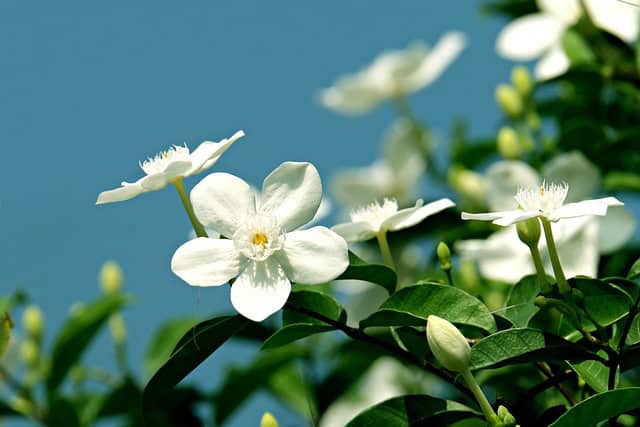
Jasmine, particularly species like Jasminum officinale (common jasmine) and Jasminum nudiflorum (winter jasmine), is prevalent in Mediterranean landscapes and is celebrated for its intoxicating fragrance. These climbing vines or shrubs are not only drought-resistant but also bring a lush, tropical feel to the garden.
When planted in well-drained soil, jasmine thrives under full sun or partial shade. Its adaptability makes it a favorite for trellises, arbors, and fences, where it can spread and cascade beautifully. The star-shaped white or yellow flowers emerge in clusters and often bloom throughout the summer, attracting pollinators such as bees and butterflies, which enhances biodiversity in your garden.
In addition to its beauty and fragrance, jasmine has cultural significance in many Mediterranean countries, often associated with home and hospitality. A jasmine-covered entrance can create a welcoming atmosphere, while its essential oils are frequently used in perfumery and aromatherapy. Planting jasmine not only contributes to the aesthetic of your garden but also provides a source of delicately scented blooms for bouquet making or relaxation.
Violet
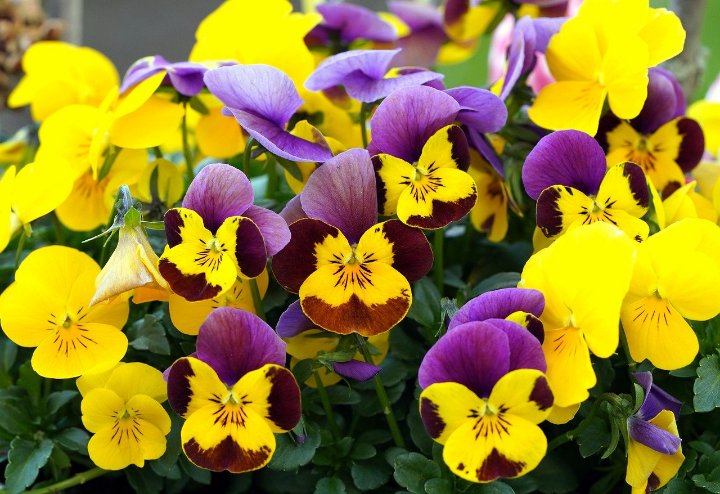
Violets (Viola spp.) may not be the first plant that comes to mind for a drought-tolerant Mediterranean garden, but many species display remarkable resilience. Known for their charming heart-shaped leaves and vibrant flowers, violets can thrive in low-water environments, especially if the conditions mimic their natural woodland habitats.
While violets prefer some shade, they can adapt to various settings, making them versatile plants for edges, rock gardens, or as ground cover. The subtle hues of violet, purple, blue, or white provide pleasing contrasts to the more intense colors often seen in Mediterranean planting schemes. Their flowers typically bloom in early spring, injecting life into the garden before transitioning into more drought-hardy plants take over during the hotter months.
Interestingly, violets are edible, and their flowers can be used to garnish dishes or brewed into teas, offering a delightful addition to your culinary explorations. They also serve an essential ecological purpose by attracting pollinators early in the season, ensuring a thriving environment throughout the growing year.
Iris

Iris species, particularly the bearded iris (Iris germanica), are renowned for their stunning blooms and drought-resistant nature, making them perfect candidates for a Mediterranean garden. These perennials are distinguished by their tall, sword-like foliage and intricate flower structures that burst forth in a range of vibrant colors, including deep purples, blues, and whites.
Iris thrives in well-drained soil and full sun, making them ideal for dry landscapes where water retention is challenging. Once established, they are exceptionally low-maintenance, requiring little watering beyond their initial growth phase, thus aligning perfectly with the principles of drought-tolerant gardening. Their rhizomatous roots not only help them survive during dry spells but also allow them to propagate, creating larger displays over time.
Besides their aesthetic appeal, irises play a significant role in garden ecology. Their blooms are attractive to a range of pollinators, including bees and butterflies, contributing to the overall health of the ecosystem. Additionally, irises possess unique symbolism in various cultures, often representing hope, wisdom, or valor. Incorporating these resilient beauties into your landscape can stimulate thought and reflection, enhancing the garden experience as a whole.
Sage
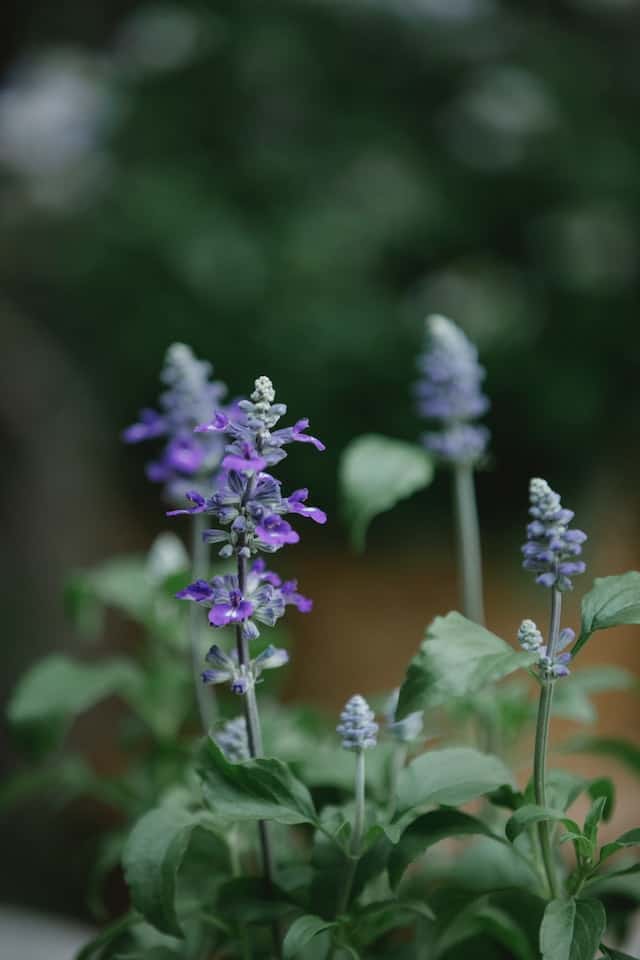
Sage (Salvia officinalis), a staple in Mediterranean herb gardens, is known for its aromatic foliage and culinary versatility. This perennial herb does more than add flavor to dishes; it is an incredibly resilient plant that flourishes in poor, rocky soils where other varieties might falter. Its ability to withstand periods of drought makes it an excellent candidate for sustainable gardening practices.
Sage thrives in full sun and benefits from well-draining soil, making it perfect for a Mediterranean garden where moisture conservation is key. The plant’s soft, gray-green leaves contrast beautifully with colorful flowering species, creating a visually appealing palette. In late spring and summer, sage produces delicate spikes of purple or blue flowers that attract bees and butterflies, enhancing biodiversity in your garden.
Beyond its ornamental qualities, sage has numerous advantages for home gardeners. Its leaves can be dried or used fresh, imparting a distinctive flavor in a variety of dishes, from stuffing to soups. Additionally, sage is known for its medicinal properties, often utilized in herbal remedies to aid digestion and reduce inflammation. By incorporating sage into your garden, you not only cultivate an eye-catching plant but also create a resource for both culinary and health-related benefits.
Geranium
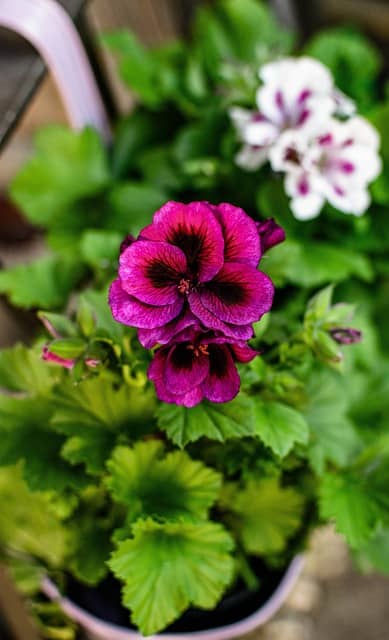
Geraniums (Pelargonium spp.), often confused with true geraniums or “cranesbills,” are a staple in Mediterranean gardens thanks to their vibrant, showy flowers and exceptional resilience. These plants come in various colors, including reds, pinks, and purples, offering a delightful burst of color even under the harshest sun. Their ability to thrive with minimal water makes them suitable for low-maintenance gardening.
Geraniums prefer well-drained soil and can tolerate heat, making them an excellent choice for areas with poor irrigation options. They can be grown in containers, window boxes, or directly in the ground, providing versatility in design. In addition to their aesthetic benefits, geraniums are relatively pest-resistant and can deter undesirable insects, further enhancing the sustainability of your garden.
These flowering plants also possess a unique feature: many varieties emit a pleasant fragrance that can enrich the garden’s sensory experience. Certain types of geraniums, particularly scented leaf varieties, can be used to make herbal teas or infused oils, expanding their utility beyond ornamental purposes. In summary, geraniums bring a vivid splash of color and a practical approach to water-wise gardening, making them a wonderful addition to your Mediterranean landscape.
Bougainvillea

Bougainvillea is a standout plant that exudes the vibrancy of Mediterranean landscapes with its dramatic display of colorful bracts, which can be found in shades of magenta, orange, yellow, and white. This sprawling vine thrives in warm, dry climates and is especially well-suited for areas where water is scarce. Bougainvillea’s natural adaptation to drought conditions enables it to flourish in less-than-ideal soils, allowing it to be an enduring symbol of Mediterranean beauty.
Bougainvillea performs best in full sun, where the vibrant colors of its bracts can shine. It can be used as a climbing vine on trellises, covering walls, or cascading from pots, adding dimension and interest to gardens. Its thorny stems and dense foliage provide an excellent habitat for birds and other wildlife, promoting a healthy ecosystem.
Since bougainvillea is a semi-tropical plant, it requires little water once established, making it perfect for Mediterranean gardens aiming for sustainability. Its low water needs translate to lower maintenance, freeing gardeners from constant watering routines. Furthermore, bougainvillea is not only visually stunning; it also serves as an effective ground cover, helping to prevent soil erosion on slopes and banks.
In addition to its ornamental uses, bougainvillea can provide practical shade and privacy when planted along fences or trellises. Its striking appearance combined with its resilience under drought conditions makes it a cherished choice in Mediterranean landscaping.
Hibiscus

Hibiscus, with its large, eye-catching blooms and lush foliage, is a remarkable choice for a drought-tolerant garden. While many native hibiscus species traditionally thrive near water sources, certain varieties—like the hardy hibiscus (Hibiscus moscheutos)—are well adapted to withstand dry spells and fluctuations in moisture. This particular type can be cultivated to define edges or serve as a focal point in sunny spots, producing spectacular flowers in hues of red, pink, and white.
These tropical and subtropical plants prefer full sun and well-drained soil, thriving in environments where other flowering plants might struggle. Once established, they exhibit remarkable resilience to drought and can go periods without additional watering. Hibiscus is not only ornamental; the flowers are often used in teas and as natural dyes, contributing an additional layer of utility to your outdoor space.
In addition to their beauty, hibiscus flowers attract a plethora of pollinators, including bees, butterflies, and birds, making them invaluable to any eco-friendly garden. Their substantial blossoms, which can measure up to 12 inches wide, serve as a magnet for these creatures, helping to create a vibrant ecosystem right in your backyard. Incorporating hibiscus in a Mediterranean garden design enhances color diversity while promoting biodiversity as well.
Lantana
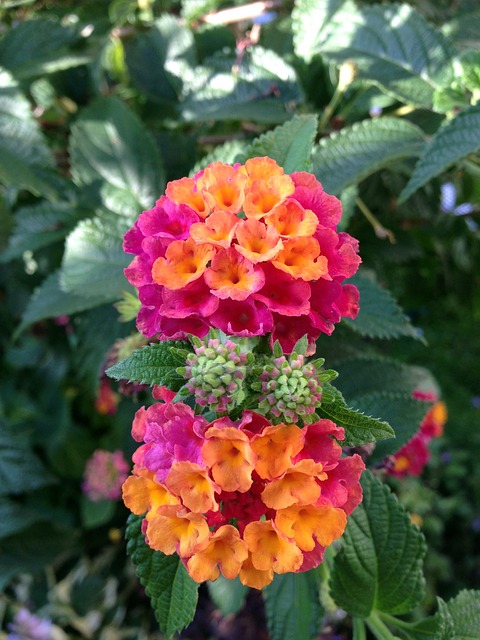
Lantana (Lantana camara) is another drought-tolerant flowering plant that thrives in the warm Mediterranean climate, making it a staple in water-wise landscapes. Known for its clusters of small, multi-colored flowers ranging from yellow to pink to orange, lantana draws attention and provides a vibrant burst of color throughout the growing season. It is also particularly appealing to butterflies and hummingbirds, adding life and movement to your garden.
This hardy plant flourishes in full sun and can tolerate poor soil conditions, further emphasizing its drought-resistant nature. Lantana’s ability to withstand drought makes it suitable for regions that experience low rainfall or heat waves, and once established, it requires minimal maintenance. It’s commonly used in borders, containers, and mass plantings, where its sprawling growth habit can create a lovely carpet of color.
While it’s essential to manage its growth, as lantana can become invasive in some regions, its adaptability and resilience in arid conditions make it a favorite for gardeners seeking low-water options. Additionally, the small, aromatic leaves have pest-repelling qualities, serving a function beyond mere aesthetics. By choosing lantana as part of your Mediterranean garden, you’ll enjoy a beautiful, vibrant display while keeping maintenance low and benefiting local wildlife.
Shrubs and Trees
While flowering plants can significantly enhance your drought-tolerant Mediterranean garden, incorporating shrubs and trees can provide structure and long-term sustainability. These plants are essential for creating shade, privacy, and habitat for wildlife, complementing the vibrant biodiversity that defines the Mediterranean landscape.
Olive Tree

The olive tree (Olea europaea) is often regarded as the quintessential tree of the Mediterranean region. Renowned for its resilience, the olive tree thrives in dry, rocky soils, thanks to its extensive root system that can extract moisture from beneath the surface. This iconic tree not only bears beautiful silvery-green leaves but also produces one of the most revered fruits in the culinary world.
Olive trees are extraordinarily drought-tolerant once established, requiring minimal water and maintenance. They can live for hundreds of years, providing shade and beauty for generations. Their gnarled trunks and delicate blossoms, which appear in late spring, create a striking visual impact in any garden setting. In addition, the nutritional benefits of olives and olive oil further enhance the appeal of integrating this species into your landscape.
The hardiness of olive trees extends beyond aesthetics; they thrive in full sun and poor soils, making them irreplaceable assets in water-conserving gardens. Furthermore, olive trees provide habitat for various wildlife species, including birds and insects, supporting biodiversity within your outdoor space. By planting olive trees, you invest in both an ornamental and functional element of your Mediterranean garden.
Lavender Sage
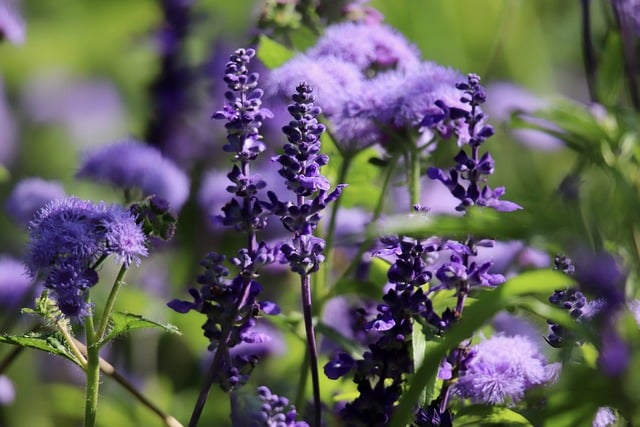
Lavender sage (Salvia leucantha), sometimes known as Mexican bush sage, offers a striking combination of drought tolerance and vibrant color. With its lush, velvety foliage and enchanting purple spikes that bloom from late summer to fall, this shrub exemplifies beauty in sustainability. Native to Mexico but adapted for Mediterranean climates, lavender sage grows well in well-draining soil and requires very little water once established.
Known for attracting hummingbirds and butterflies, lavender sage serves an essential role in maintaining a thriving ecosystem. This low-maintenance shrub is perfect for borders, containers, or as a centerpiece in garden beds. The aromatic leaves also add sensory value to your garden, releasing a delightful fragrance when brushed or disturbed.
Fig Tree
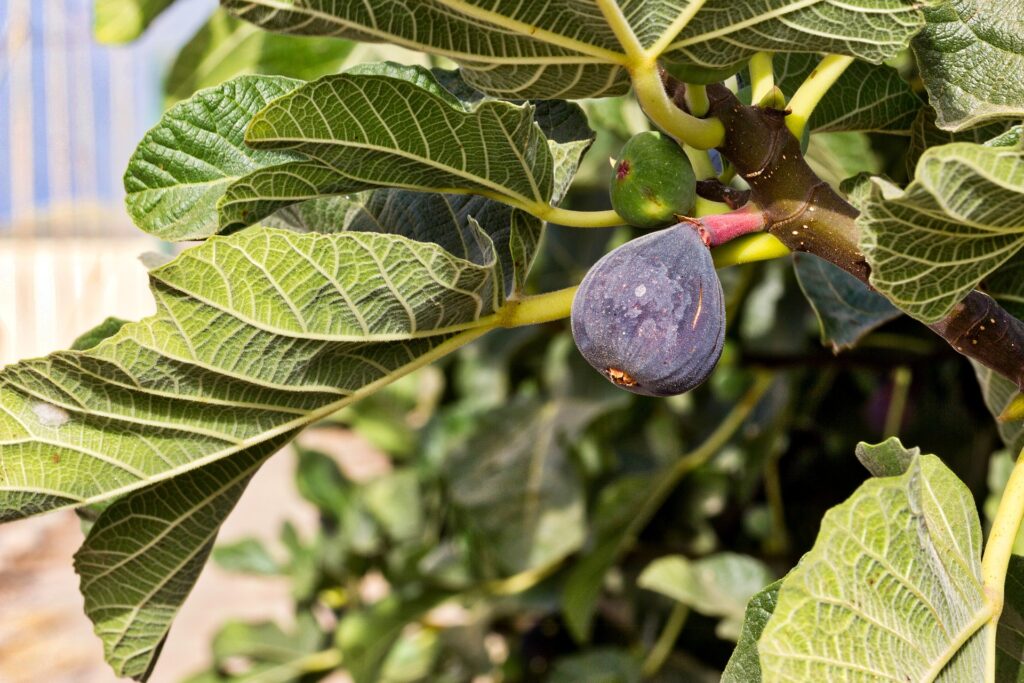
The fig tree (Ficus carica) is another splendid addition to drought-tolerant Mediterranean gardens, offering both ornamental and practical benefits. These trees thrive under full sun and require well-drained soils, making them perfectly adapted to the hot, arid climate typical of Mediterranean regions. Fig trees are not only resilient but also relatively low maintenance, requiring only occasional watering once established.
The grandeur of a fig tree, with its sprawling branches and large, lobed leaves, can provide ample shade in the summer months. In the late summer to early fall, the tree produces luscious edible fruits that are not only a delight for human palates but also attract a variety of wildlife, including birds and insects. Fresh figs can be enjoyed straight from the tree or used in numerous culinary dishes, from salads to desserts, enhancing the garden’s utility.
In addition to their fruit-bearing capabilities, fig trees also have historical and cultural significance throughout the Mediterranean, often symbolizing abundance and prosperity in various mythologies and traditions. Their ability to bear fruit in less-than-ideal conditions showcases a connection between the resilience of nature and the history of human agriculture in this region.
Bay Laurel

Bay laurel (Laurus nobilis), widely known for its aromatic leaves, is both a culinary staple and an attractive addition to the Mediterranean garden. This evergreen shrub or small tree not only thrives in dry, well-drained soils but also endures heat and wind, making it perfectly suited for arid climates. The glossy, dark green leaves of bay laurel are a valuable culinary herb, often used to flavor soups, stews, and sauces.
In a garden setting, bay laurel can be shaped into formal hedges or left to grow naturally, providing structure and design. During the growing season, the plant produces small yellow flowers that may appear inconspicuous but are highly attractive to pollinators, thus playing a role in sustaining local wildlife populations. The leaves are drought-resistant and, once established, the bay laurel requires minimal watering, making it a practical choice for eco-conscious gardeners.
Notably, bay laurels also have historical significance; used in ancient Greece to crown victors in athletic competitions, the leaves symbolize triumph and honor. Incorporating this plant into your garden not only ties it to Mediterranean heritage but also adds culinary versatility and fragrant greenery.
Holm Oak
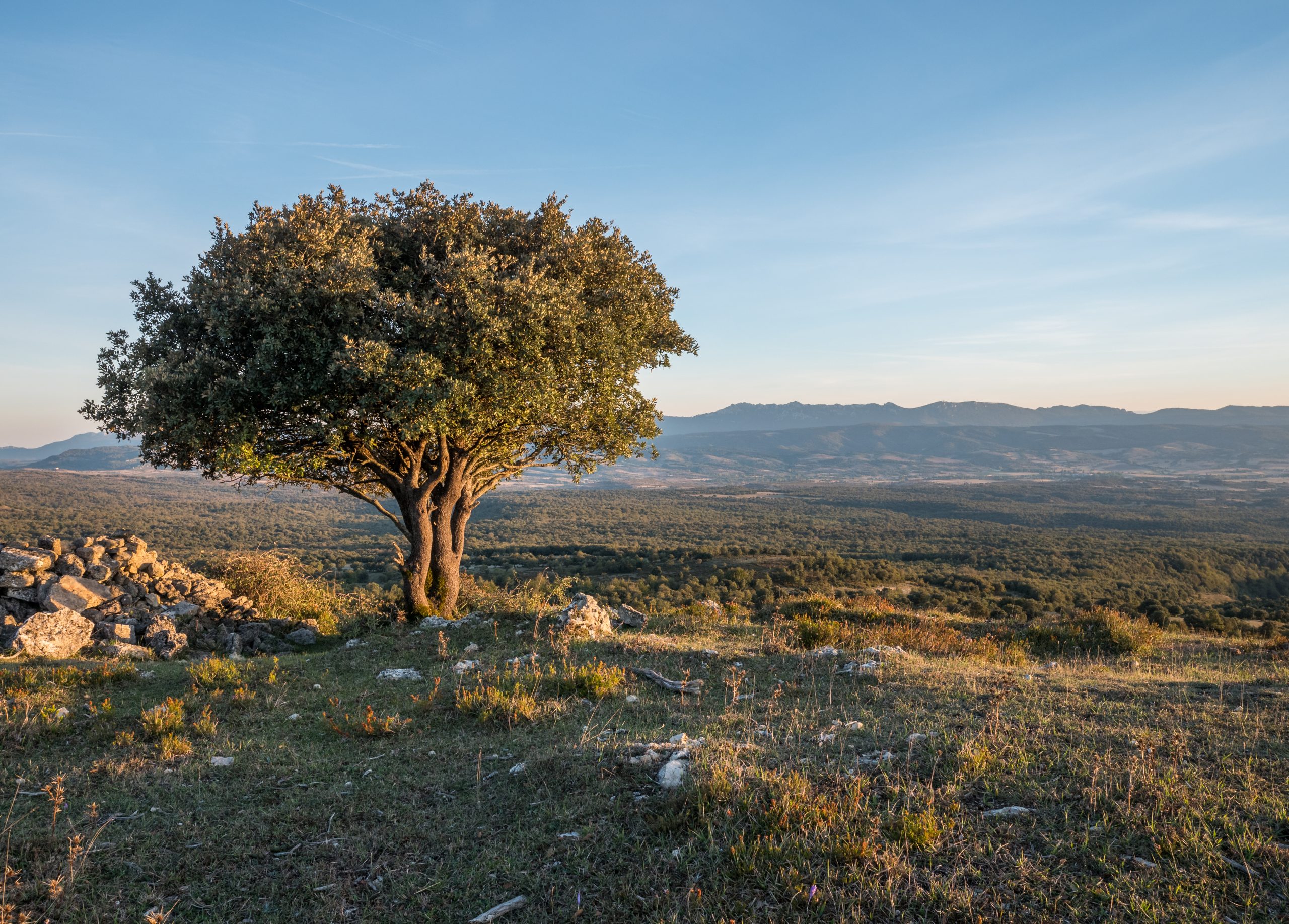
The holm oak (Quercus ilex) is a majestic evergreen tree that epitomizes the Mediterranean landscape. Often found in both wild areas and cultivated gardens, this hardy tree is highly adapted to withstand prolonged periods of drought. Holm oaks have a remarkable ability to endure poor soils and don’t require substantial water once established, making them ideal candidates for sustainable gardening in Mediterranean climates.
With a canopy that can provide significant shade, holm oaks can serve practical purposes in your garden, cooling outdoor spaces during hot summer months. Their dense foliage, consisting of leathery, dark green leaves, allows them to adapt to harsh conditions while contributing to the aesthetic appeal of the landscape. In spring, holm oaks bear small, inconspicuous flowers that give way to acorns, an important food source for local wildlife, including birds and small mammals.
The holm oak’s ability to thrive in varying conditions makes it a valuable asset in semi-arid regions. It can also be used in reforestation projects due to its adaptability and resilience, serving as an exemplar of how natural systems can benefit from careful and thoughtful planting. By including holm oaks in your Mediterranean garden, you bring a sense of permanence and strength, encouraging an ecological balance while enjoying the elegant beauty these trees offer.
Phoenician Juniper
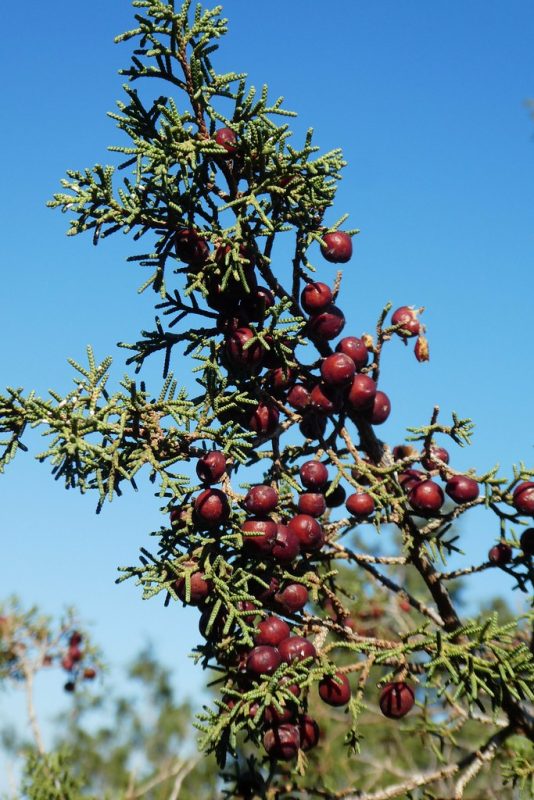
The Phoenician juniper (Juniperus phoenicea) is a resilient evergreen that thrives in harsh climates, making it an exemplary choice for drought-tolerant Mediterranean gardens. This native species, which typically grows along the Mediterranean coast, is known for its ability to adapt to rocky soils and extreme conditions while providing visual interest with its interesting form and aromatic foliage.
Phoenician junipers are characterized by their dense, bushy growth and attractive scale-like leaves, which can present a striking backdrop or a softening element in the garden landscape. When mature, these trees can reach heights of up to 30 feet, making them ideal for creating privacy screens or as standalone focal points. Their berry-like cones are not only aesthetically pleasing but also provide food for various bird species, thus supporting local wildlife.
Moreover, this juniper species is exceptionally drought-resistant; once established, it requires minimal watering and can survive extended dry spells. Its ability to thrive in poor soil conditions enhances its appeal as a low-maintenance option for gardeners looking to create sustainable landscapes that reflect Mediterranean charm.
Cypress
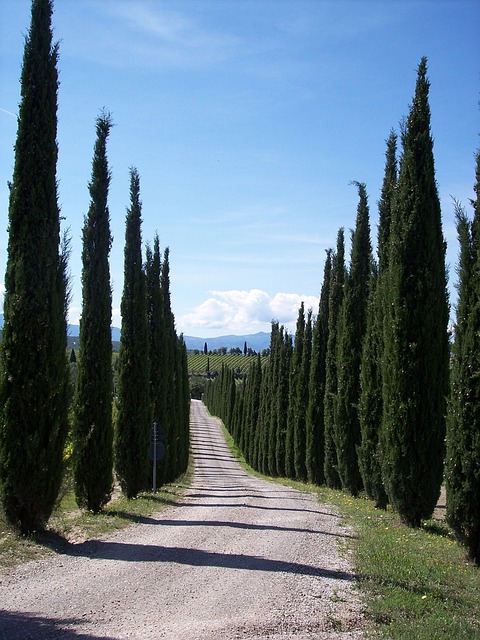
Cypress trees, particularly the Italian cypress (Cupressus sempervirens), play a defining role in the Mediterranean landscape, often associated with iconic villa gardens and sun-drenched landscapes. With their towering, slender silhouettes and rich green foliage, cypress trees bring verticality and drama to outdoor spaces while serving as perfectly drought-resistant specimens.
These trees are highly sought after for their ability to adapt to dry conditions, thriving in full sun with minimal water requirements after they are established. Their narrow growth habit makes them perfect for planting as windbreaks, privacy screens, or alleyway plantings, providing both practical and aesthetic benefits to the garden.
In addition to their ornamental value, cypress trees are deeply rooted in Mediterranean culture, often symbolizing eternity and immortality. They possess a timeless quality, gracing historical sites and landscapes across the region. Planting cypress trees in your garden connects it not only to the Mediterranean ambiance but also to centuries of art and literature that celebrate their beauty.
Additionally, their aromatic wood is prized for its natural resistance to decay and insect damage, making it a sustainable choice for outdoor furniture and landscaping applications. By incorporating cypress into your garden design, you’re not just enhancing your landscape but also embracing a plant steeped in history and tradition.
Pomegranate
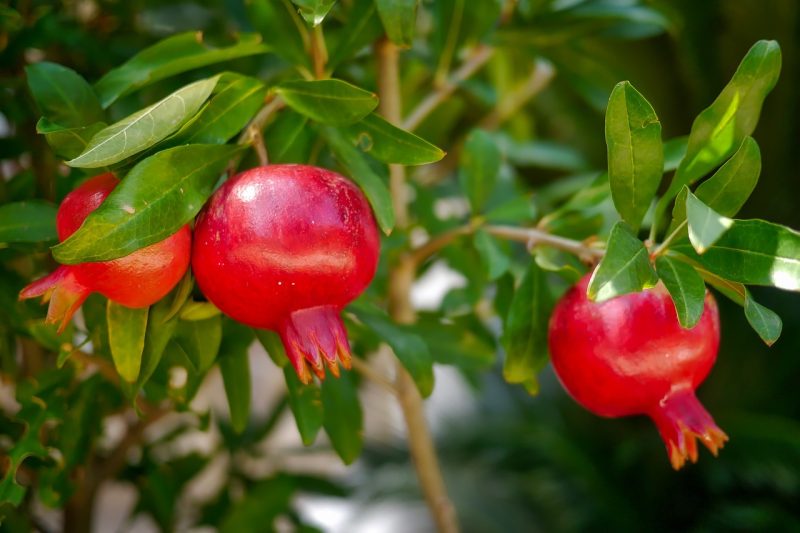
The pomegranate (Punica granatum) is a versatile deciduous shrub or small tree celebrated not only for its drought tolerance but also for the bounty of fruit it produces. Well-adapted to the Mediterranean climate, pomegranates thrive in sunny, dry environments, making them an excellent addition to any drought-resilient garden.
This plant is revered for its glossy, dark green leaves and stunning orange-red flowers that bloom in the late spring and early summer, attracting bees and pollinators to your garden. After flowering, the flowers give way to the distinctive pomegranate fruit, which ripens in late summer to early fall. The fruit is not only delicious but also has a rich cultural significance; it is associated with fertility and abundance in various myths and traditions around the world.
Once established, pomegranate trees are remarkably drought-resistant and can survive periods of low water without compromising fruit production. They thrive best in well-drained soil, where their roots can penetrate deeply—a characteristic that allows them to access moisture in challenging environments.
In addition to their ornamental and culinary benefits, pomegranates are known for their nutritional value, being rich in antioxidants and vitamins. Planting a pomegranate tree not only enhances the visual diversity of your garden but also adds a source of healthy fruit, encouraging a farm-to-table ethos and connecting you to the natural cycles of growth.
Carob Tree
The 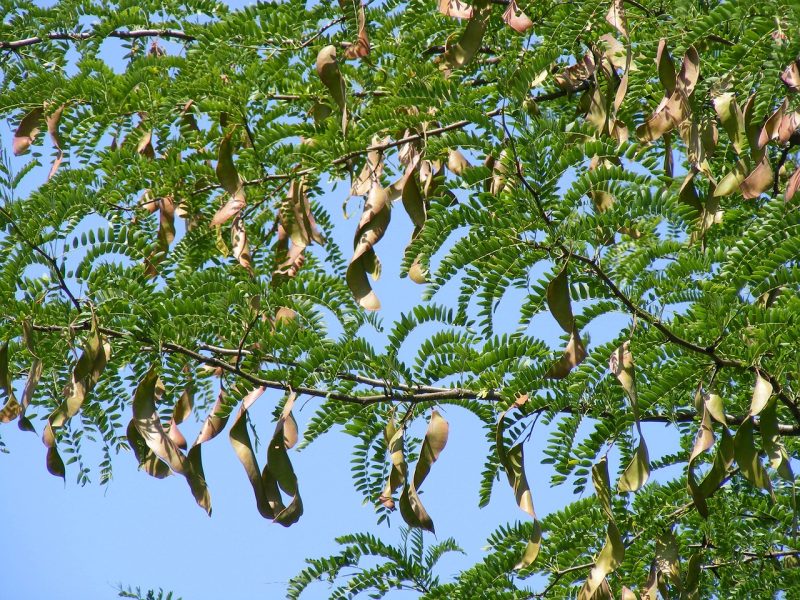 , often referred to as the “St. John’s bread tree,” is a unique and resilient tree that thrives in dry, rocky soils commonly found in Mediterranean regions. Known for its long, flat pods that contain sweet, edible pulp, the carob tree is often praised for its sustainability and minimal maintenance needs. Once established, it requires very little water, making it a champion in drought tolerance.
, often referred to as the “St. John’s bread tree,” is a unique and resilient tree that thrives in dry, rocky soils commonly found in Mediterranean regions. Known for its long, flat pods that contain sweet, edible pulp, the carob tree is often praised for its sustainability and minimal maintenance needs. Once established, it requires very little water, making it a champion in drought tolerance.
Carob trees are typically hardy and can withstand extreme heat and poor soil quality, making them ideal candidates for xeriscaping. They are also highly regarded for their ecological contribution, providing shade and food for various wildlife, including birds and insects. The lush, evergreen leaves of the carob tree create a pleasant canopy, making it well suited for parks and gardens where shade is desired.
In addition to their aesthetic and ecological benefits, carob pods are a nutritious alternative to chocolate. The pulp is rich in fiber and naturally sweet, making it a popular ingredient in health foods and as a chocolate substitute in various recipes. By incorporating a carob tree into your Mediterranean garden, you’re not only enriching the landscape but also introducing an environmentally friendly source of nourishment for both yourself and local wildlife.
Pistachio Tree
The pistachio tree (Pistacia vera) is a delightful addition to any drought-tolerant Mediterranean garden, celebrated not only for its unique foliage but also for its delicious nuts. This deciduous tree thrives in warm climates and is well adapted to arid conditions, showcasing a remarkable ability to withstand adverse weather and low-water situations once established.
Pistachio trees require full sun and well-drained soil, thriving best in sandy or gravelly substrates—characteristics that make them perfect for Mediterranean landscapes. Their attractive, pinnate leaves can add texture and shade to the garden, while the tree can grow up to 30 feet tall. The tree produces male and female flowers, and to set fruit, both sexes must be present, typically requiring a male tree for every 4 to 6 female trees.
Pistachios are not only a culinary delight but also packed with health benefits, being rich in healthy fats, protein, and antioxidants. As the nuts mature, they produce a vibrant show of color, with the shells often splitting open to reveal the green kernels inside—a sight that adds charm to the garden during harvest season.
Besides the edible harvest, pistachio trees are excellent for promoting biodiversity, attracting various pollinators and beneficial insects. Incorporating a pistachio tree provides a unique opportunity to cultivate a diverse ecosystem while enjoying the satisfaction of growing your own food. Their ornamental qualities and delicious yields make pistachio trees an enriching addition to any Mediterranean garden designed for sustainability.
Succulents
Succulents are a quintessential element of Mediterranean gardens, renowned for their remarkable ability to conserve water. Their unique adaptations allow them to flourish in arid environments, making them one of the best choices for drought-tolerant landscaping.
Aloe Vera
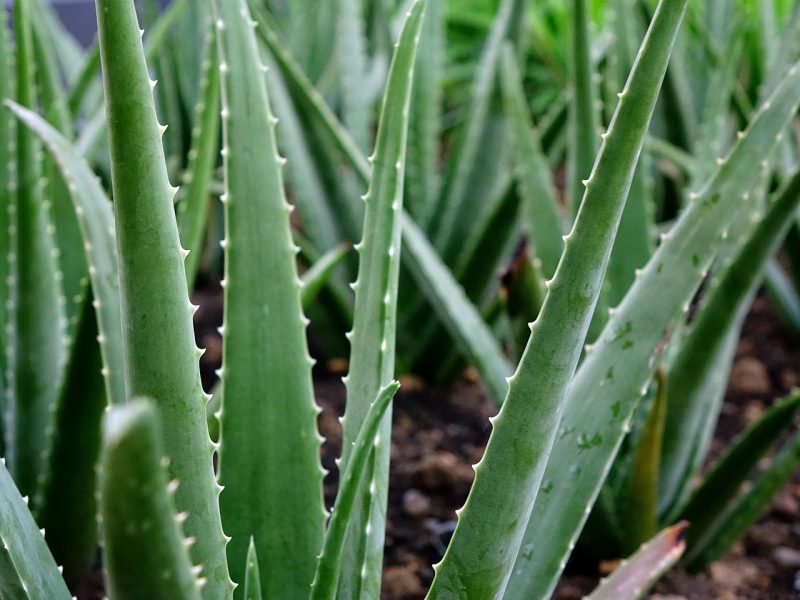
Aloe Vera (Aloe barbadensis miller) is perhaps one of the most well-known succulents, celebrated not only for its striking appearance but also for its myriad of medicinal and culinary applications. This plant is characterized by its fleshy, succulent leaves that form a rosette at the base, showcasing a vibrant green hue with occasional mottled patterns. Aloe Vera thrives in well-draining soil and requires minimal water, making it an ideal candidate for Mediterranean gardens where moisture may be scarce.
One of the remarkable features of Aloe Vera is its gel-like substance contained within the leaves. This gel is renowned for its soothing properties and is widely used in skincare products and natural remedies for burns, sunburns, and skin irritations. Additionally, the gel is safe for consumption and is often added to smoothies and health drinks for its purported health benefits—it’s rich in vitamins, enzymes, and amino acids.
Aloe Vera blooms with tall spikes that produce tubular orange or yellow flowers during the warmer months, attracting a variety of pollinators such as bees and hummingbirds. The compact size of Aloe Vera makes it versatile for various planting schemes, whether in containers, borders, or as part of rock gardens. By including Aloe Vera in your Mediterranean garden, you not only create a visually appealing space but also harness the practical benefits of this resilient, water-saving succulent.
Agave
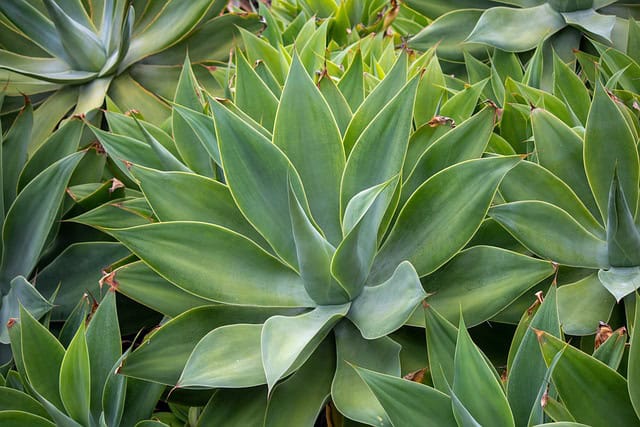
Agave, particularly species like Agave americana and Agave parryi, are iconic representatives of arid landscapes and are well-suited for drought-resistant gardening. Known for their dramatic rosette formations and sharp, pointed leaves, agave plants can provide striking focal points in the garden. With their distinctive architectural shapes, they contrast beautifully with softer foliage and flowering plants, making them a valuable addition to any Mediterranean landscape.
Agave is remarkably adapted to dry climates, capable of storing substantial water in its leaves. These succulents thrive in poor, sandy soils and require minimal irrigation. In fact, they are best grown in full sun, where they can flourish without the risk of rot, which can occur in soggy conditions. Once established, agave plants are virtually maintenance-free, requiring little attention other than removal of any dead leaves that may detract from their aesthetic appeal.
Another unique aspect of agave is its lifecycle. Most agave species are monocarpic, meaning they flower only once and die shortly after producing a spectacular bloom. This flowering process can take several years—sometimes even decades—culminating in a tall flower spike that can tower over the plant, laden with clusters of small yellow or green flowers. This remarkable display attracts bees, butterflies, and other pollinators, enhancing the biodiversity of your garden.
Moreover, agave plants are not only visually striking but also serve practical purposes. In many cultures, agave leaves are harvested for agave syrup, a popular natural sweetener, and for the production of tequila. Installing agave in your Mediterranean garden not only adds a touch of dramatism but also connects your space to the cultural significance of this versatile plant.
Echeveria

Echeveria is a genus of rosette-forming succulents that bring a touch of elegance and beauty to any Mediterranean garden. Known for their stunning array of shapes, colors, and sizes, Echeveria plants are a popular choice for garden beds and container arrangements alike. Their fleshy leaves often display beautiful hues ranging from pale blue and lavender to deep green, with some varieties even showcasing striking red or pink edges.
Echeveria thrives in well-draining soil and requires minimal care once established. While they prefer full sun, they can also adapt to partial shade, making them versatile for a variety of garden layouts. These plants store water in their thick leaves, allowing them to withstand long periods of drought, making them incredibly resilient. They typically bloom in late spring or summer, producing tall flower spikes adorned with tubular blossoms that attract pollinators such as bees and hummingbirds.
Due to their thick foliage and rosette shape, Echeveria varieties create visual drama and depth within the garden setting. They pair wonderfully with other drought-tolerant plants, providing a stunning contrast in textures and colors. Whether used as ground cover, in rock gardens, or within mixed succulent arrangements, Echeveria adds a captivating aesthetic dimension while embodying the spirit of water-wise gardening.
Crassula
Crassula is a diverse genus that includes many well-known succulent species, such as the jade plant (Crassula ovata), recognized for its attractive fleshy leaves and attractive growth habit. Crassula plants display a remarkable ability to thrive in harsh, dry environments, with many species well-adapted to the heat and drought associated with Mediterranean climates.
Crassula plants often feature unique formations, such as upright stems, trailing vines, or compact rosettes, providing various options for garden design. Depending on the species, their leaves may vary in color from deep green to burgundy, sometimes appearing with fascinating markings or edges that add further appeal. They are typically low-maintenance, requiring well-draining soil and occasional watering—generally only when the soil is completely dry.
One of the highlights of Crassula is its flowering habit; during the growing season, many species produce clusters of tiny, star-shaped flowers that can be white, yellow, or bright pink, creating captivating displays that entice pollinators. Crassula plants are ideal for borders, rock gardens, and hanging baskets, helping to define spaces within the garden while maintaining an air of tranquility and beauty.
By integrating Crassula into your Mediterranean landscape, you are not only enhancing the visual interest of your space but also contributing to a diverse ecosystem that supports pollinators and other beneficial insects.
Sedum
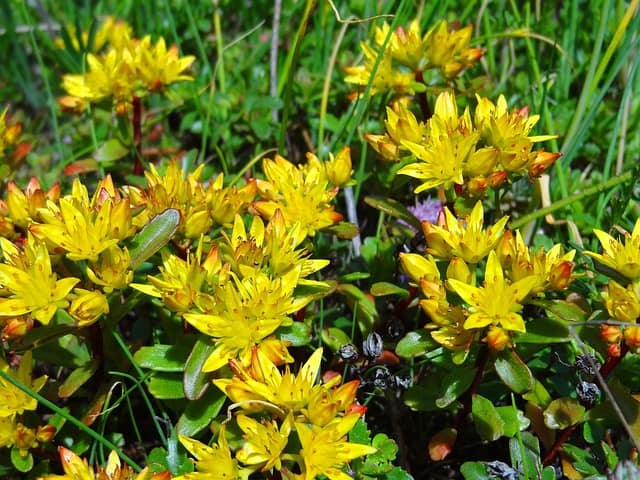
Sedum, commonly referred to as stonecrop, encompasses a broad range of succulent species that thrive under dry conditions, making them a favored choice in Mediterranean gardening. Sedum plants are primarily known for their adaptability, vibrant blooms, and charming fern-like foliage. With over 400 species, they exhibit considerable variety in size, shape, and color, allowing you to incorporate them in numerous creative ways within your garden.
One of the defining features of Sedum is its ability to grow in poor soil and its drought-tolerant nature. The fleshy leaves store water, enabling Sedum to survive even during extended dry spells. Whether planted as ground cover, in rock gardens, or as container plants, they form a radiant carpet of color that can light up the garden throughout the growing season. Sedum often flowers in late summer or early fall, producing clusters of star-like blossoms in shades of yellow, pink, or red, which attract pollinators seeking nectar.
Sedum species are also excellent choices for living roofs and green walls, where their shallow root systems allow them to flourish in compact spaces while aiding in water retention and insulation. Their ease of propagation further adds to their appeal—simply taking a leaf cutting and placing it in the soil can result in new plants thriving on their own.
Kalanchoe
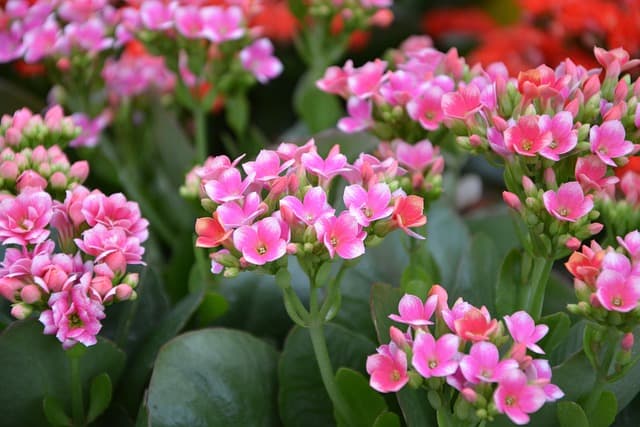
Kalanchoe is a diverse genus of succulent plants known for their vibrant blooms and ability to thrive in dry conditions. With over 200 species, Kalanchoe plants range from small, compact varieties to taller, more sprawling forms, making them a flexible choice for container gardens, window boxes, and ground cover. Their thick, fleshy leaves not only store moisture but also come in an array of captivating shapes and colors, from pale green to deep red, often with striking markings that add visual interest.
One of the remarkable features of Kalanchoe is its prolific flowering capability. Many species, such as Kalanchoe blossfeldiana, produce clusters of small, tubular flowers in shades of red, pink, yellow, or white, usually blooming in the cooler months when many other plants are dormant. These dazzling displays not only add a splash of color to the garden but also attract pollinators, including bees and butterflies, which adds to the overall biodiversity of your Mediterranean landscape.
Kalanchoe’s resilience and low maintenance requirements make it particularly appealing for busy gardeners. It thrives in well-drained soil and requires infrequent watering, making it an ideal candidate for drought-prone areas. Whether you choose to plant Kalanchoe in mixed beds, as accent plants, or in decorative containers, this succulent will bring an enduring charm to your garden while embodying the principles of Mediterranean gardening.
Grasses and Ground Covers:
When considering drought-tolerant garden designs, incorporating ornamental grasses can enhance structural balance and texture.
Blue Fescue Grass

Blue Fescue Grass (Festuca glauca) is a striking choice that offers a stunning contrast to the typical leafy plants found in Mediterranean gardens. Known for its fine, blue-green foliage, this cool-season grass brings both visual interest and practicality to the landscape.
Blue Fescue thrives in well-drained, rocky soils and requires minimal watering, making it an excellent choice for areas with low moisture. Its clumping growth habit forms neat mounds that can serve as an effective ground cover, helping to suppress weeds while providing a lush, green carpet that softens hardscapes and pathways. The delicate plump tufts of foliage create a vibrant visual effect, enhancing the overall aesthetic of your Mediterranean garden.
In addition to its drought tolerance, Blue Fescue provides year-round appeal. In late spring and summer, the grass produces airy flower spikes that rise above the foliage, transitioning from a silvery hue to a tawny color as they mature. These feathery plumes are not only decorative but also attract beneficial insects, enhancing the ecological health of your garden.
Blue Fescue is versatile enough to utilize in various landscaping styles—from contemporary gardens with clean lines to more naturalistic designs. As an ideal border plant or within rock gardens, it harmonizes beautifully with other Mediterranean plants, allowing for striking combinations. By incorporating Blue Fescue Grass, gardeners can effectively create a stunning display while promoting sustainability and resilience in their landscapes.
Cistus

Cistus, commonly known as rock rose, is a stunning genus that encompasses a variety of evergreen shrubs celebrated for their drought tolerance and exquisite blossoms. Hailing from the Mediterranean regions, Cistus plants are well-adapted to withstand the challenges of hot, dry summers. Their leathery leaves are designed to minimize water loss, making them perfect for xeriscaping.
Blooming from spring through early summer, Cistus produces striking flowers that can be single or double, with colors ranging from pure white to deep pink and vibrant magenta. The delicate, crepe-like petals have a charming, tissue-paper quality, adding an ethereal beauty to any garden setting. Attracting various pollinators, such as bees and butterflies, these blooms contribute significantly to the biodiversity of your Mediterranean landscape.
Cistus prefers poor to moderately fertile soils and thrives in full sunlight. Once established, it requires minimal watering, making it a perfect choice for gardeners looking to create a low-maintenance landscape. Whether used as a standalone feature, in mass plantings, or as part of a mixed border, Cistus brings a sense of rugged elegance while embodying the resilience of Mediterranean flora.
Thyme
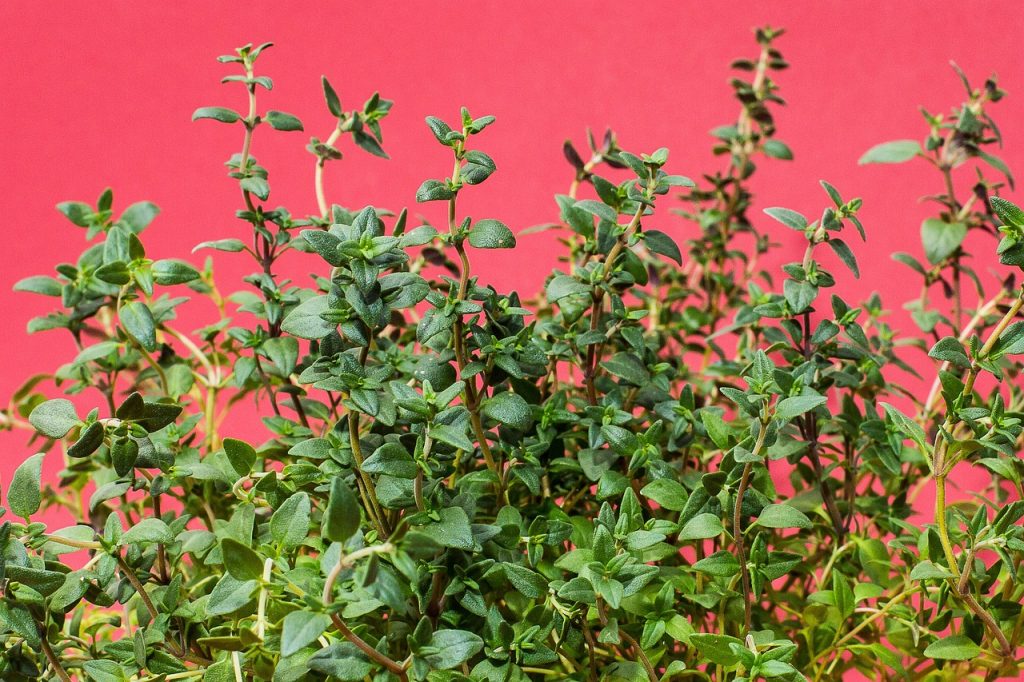
Thyme (Thymus vulgaris) is not just a flavorful herb often found in Mediterranean cuisine; it is also an excellent ground cover that thrives in dry conditions. Known for its woody stems and tiny, aromatic leaves, thyme is a versatile plant that can enhance culinary experiences while providing functional benefits in the garden.
This herb is incredibly well-suited to Mediterranean gardens due to its preference for well-draining soil and full sun. Thyme is drought-tolerant, requiring minimal watering after establishment, making it an eco-friendly choice for those looking to conserve water. Its dense foliage serves as an effective ground cover that helps prevent soil erosion and suppresses weed growth.
In addition to its culinary uses, thyme’s delicate purple, pink, or white flowers bloom in late spring and early summer, attracting beneficial insects and pollinators to the garden. These flowering periods also enhance the visual appeal of your landscape, adding texture and color against the backdrop of other drought-tolerant plants. Thyme can be used in rock gardens, pathways, or even as a fragrant edging plant, contributing greatly to the sensory experience of your Mediterranean space.
Creeping Rosemary
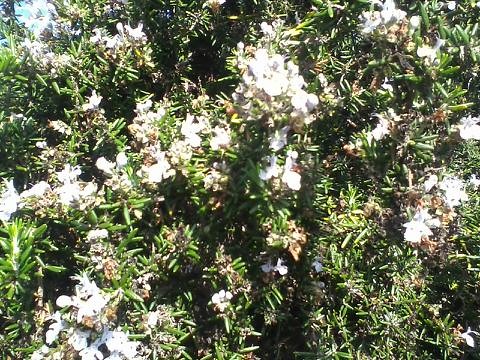
Creeping Rosemary (Rosmarinus officinalis ‘Prostratus’) is a trailing form of the traditional rosemary plant that embodies the spirit of a Mediterranean garden. With its prostrate growth habit, this aromatic herb thrives under sunny conditions and is extremely drought-resistant, making it an excellent ground cover in dry areas.
Creeping rosemary features needle-like leaves that exude a piney scent, lending a fragrant note to the garden. Its foliage has culinary applications, enhancing dishes with its rich flavor. The plant produces charming blue flowers in late spring through early summer, which not only add beauty but also attract pollinators such as bees and butterflies.
This hardy ground cover can thrive in well-drained soils and tolerates a variety of conditions, from sandy to rocky landscapes. Its ability to spread and colonize areas makes it an ideal choice for suppressing weeds while enhancing erosion control on slopes. Creeping rosemary is often used in Mediterranean-style gardens, borders, and pathways, where its aesthetic charm and fragrant presence can be fully appreciated.
In addition to its functional benefits, creeping rosemary’s vibrant green foliage and blue flowers create a stunning visual contrast with other drought-tolerant plants, allowing for a richly layered garden design.
Dymondia
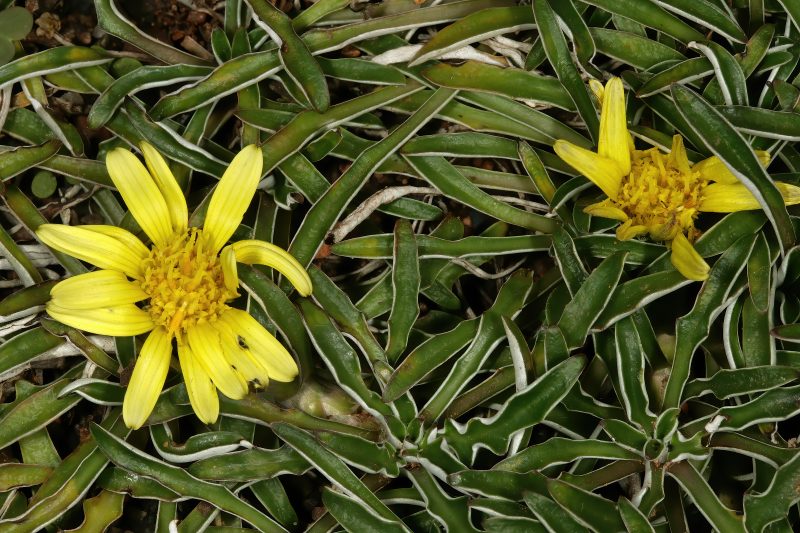
Dymondia is a low-growing, mat-forming ground cover known for its exceptional drought-tolerant qualities. Commonly referred to as Silver Carpet, this plant hails from South Africa and adapts beautifully to a Mediterranean climate, making it a perfect fit for sustainable gardening.
Dymondia features succulent, gray-green leaves that create a lush, dense carpet, often highlighted by its striking silver sheen. This visual texture makes it an appealing option for landscape aesthetics, particularly in pathways, between pavers, or alongside rock gardens where its prostrate form can spill elegantly over edges. Interestingly, Dymondia is capable of tolerating light foot traffic, which adds a functional aspect to its role in garden design.
During the warmer months, Dymondia rewards gardeners with small, yellow daisy-like flowers that bloom amidst the foliage, thereby attracting pollinators and enhancing the visual aspect of your garden. It thrives in full sun and poor to moderately fertile soils, needing little water once established. This makes Dymondia an excellent choice for those looking to cultivate a low-maintenance, eco-friendly landscape that thrives in the face of heat and aridity.
Delosperma

Delosperma, commonly called ice plant, is a vibrant genus of succulent plants that includes various species renowned for their stunning floral displays and strong drought tolerance. Native to South Africa, Delosperma is particularly favored in Mediterranean gardens where water conservation is essential.
One of the most captivating features of Delosperma is its eye-catching flowers, which bloom profusely in the spring and summer. The blossoms can be found in an array of colors, including bright pink, purple, yellow, and white, creating a dazzling spectacle when planted en masse. These flowers are not only visually appealing but also attract a host of pollinators, enriching the biodiversity of your garden.
Delosperma thrives in well-draining soils and prefers full sunlight, making it an ideal candidate for sunny patches in your garden. Its fleshy leaves help retain moisture, and it can endure extended periods of drought once established. The plant’s low and spreading habit makes it a fantastic choice for ground cover, effectively curbing weeds while adding vibrant colors to rock gardens and sloped areas.
Furthermore, many Delosperma species are excellent candidates for container gardening, allowing you to create beautiful displays on patios or balconies while enjoying their delightful blooms. Their resilience and adaptability make them a reliable choice for gardeners seeking to add a splash of color to drought-prone landscapes.
Climbing Plants: Vertical Elements of Drought-Tolerant Gardens
These options not only exhibit remarkable resilience in dry climates but also offer unique aesthetics and functional benefits, enriching your outdoor sanctuary.
Honeysuckle
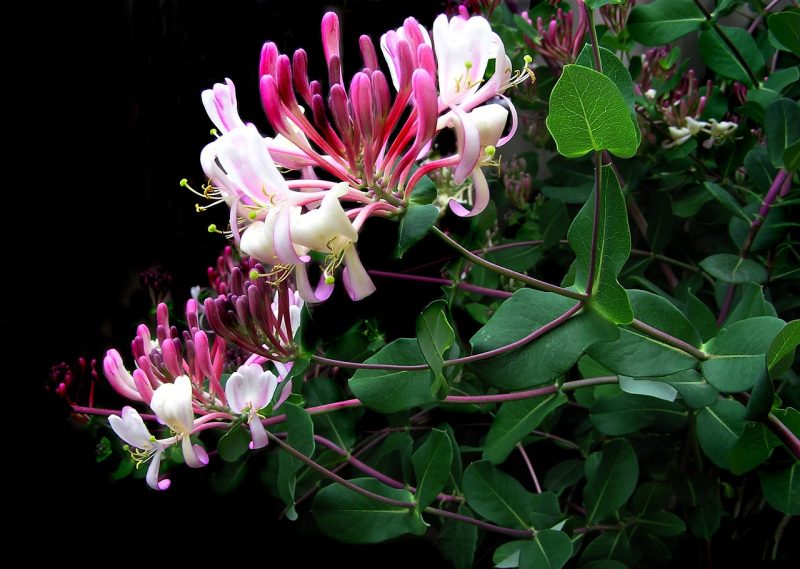
Honeysuckle (Lonicera spp.) is a beloved climbing plant that enchants gardeners with its fragrant blooms and persistent foliage. Native to both North America and Europe, honeysuckle varieties are extremely adaptable and can thrive in a variety of climates, including the dry and sunny Mediterranean conditions.
One of the most appealing aspects of honeysuckle is the range of colors and forms available, from the vigorous Japanese Honeysuckle (Lonicera japonica) to the exquisite Goldflame Honeysuckle (Lonicera heckrottii), which boasts eye-catching orange and yellow tubular flowers. These flowers not only add a burst of color but also attract hummingbirds and beneficial pollinators to your garden, enhancing its ecological balance.
Honeysuckle is particularly valued for its drought tolerance once established, needing only occasional watering during dry spells. Its climbing habit allows it to beautifully drape over trellises, fences, or arches, creating a lush and inviting atmosphere. With proper pruning, honeysuckle can be trained to maintain an ideal shape while promoting bushier growth for a fuller appearance. The sweet fragrance of honeysuckle, especially in the evening, can transform your garden into a sensory oasis.
Clematis
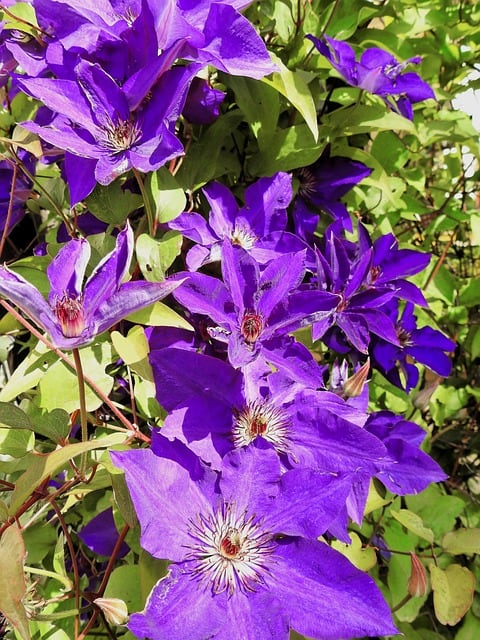
Clematis is a diverse genus of climbing plants known for their magnificent flowers and variety of growth habits. Renowned for their ability to flourish in Mediterranean climates, certain species of clematis are exceptionally drought-tolerant once established, making them an excellent addition to your garden.
With a vast range of species and cultivars, clematis offers flowers in nearly every color imaginable, from deep purples and vivid reds to soft pastels. Varieties like Clematis montana and Clematis texensis are highly regarded for their resilience and ability to bloom profusely under sunny conditions. Additionally, clematis can be trained to climb trellises, arbors, or even walls, creating visual drama and height in the garden space.
While clematis does require some initial water to establish its roots, it grows well in well-drained soil and can thrive in less fertile conditions. Once mature, its adaptability to drought makes it a strong candidate for water-wise gardening. Moreover, clematis is often appreciated for its layered growth habit, allowing for an interesting interplay of colors and textures among other plants. When combined with other drought-tolerant species, clematis helps create a dynamic garden atmosphere that remains visually appealing throughout the growing season.
Mandevilla

Mandevilla is a tropical-to-subtropical climbing plant that captivates with its striking trumpet-shaped flowers. Often seen in Mediterranean-inspired gardens, Mandevilla is celebrated for its ability to thrive in sunny, dry conditions, making it an excellent choice for warm climates.
Available in a range of colors—from vibrant pinks and reds to creamy whites—Mandevilla flowers bloom profusely from late spring through early fall, providing a sensational focal point in landscapes and container displays alike. Its glossy, green leaves create a lush backdrop that enhances the vibrancy of its blossoms, while its climbing nature allows it to elegantly scale trellises, walls, and fences.
Though Mandevilla prefers rich, well-drained soil, it’s surprisingly tolerant of periods of drought once established. Pruning after blooming encourages bushier growth and helps keep the plant in check, preventing it from becoming overly rambunctious. As a warm-weather lover, Mandevilla is generally grown as an annual in cooler regions but can be over-wintered indoors in those climates, extending its garden presence beyond just one season.
Additionally, Mandevilla is known for its appeal to pollinators like hummingbirds and butterflies, making it an excellent choice for wildlife-friendly gardens. Its ability to bring both beauty and buzzing activity makes it a delightful addition to any drought-tolerant Mediterranean design.
Passionflower

Passionflower (Passiflora spp.) is a visually stunning climbing plant that brings a touch of the exotic to Mediterranean gardens. Known for its complex and intricate blooms, passionflower produces distinctive flowers that often resemble ornate structures. The shapes and colors can vary dramatically among species, with hues ranging from bright purple and white to vibrant red and blue, creating an unparalleled visual interest.
This perennial favorite thrives in full sun and is adept at quick growth, often climbing over fences, pergolas, or trellises within a growing season. Passionflower is particularly hardy, displaying a remarkable resistance to drought once established. Its deep root system allows it to tap into underground moisture, which helps it survive during hot, dry spells typical of Mediterranean climates.
In addition to its ornamental value, passionflower is known for its edibility. Some species produce fruit known as passionfruit, which is not only delicious but also packed with vitamins and antioxidants. The lush foliage and unique flowers of passionflower attract a variety of pollinators, including butterflies and bees, contributing to a lively garden ecosystem.
Passionflower is relatively low-maintenance, requiring minimal watering after establishment, and is often pruned to help shape its growth and encourage blooming. This versatility, combined with its ability to thrive in challenging conditions, makes passionflower an excellent choice for gardeners aiming for a sustainable, drought-resistant Mediterranean landscape.
Wisteria
Wisteria is a majestic climber known for its cascading clusters of fragrant, drooping flowers that can transform any garden into a fairy tale. Native to Asia, North America, and parts of Europe, wisteria varieties are well-suited to warmer climates and can thrive in the Mediterranean’s dry heat.
Wisteria’s breathtaking blooms come in shades of purple, blue, and white and typically emerge in spring. The sheer volume of flowers creates a stunning display, often enveloping pergolas, trellises, and even mature trees in a fragrant waterfall of color. While wisteria is known for its beauty, it is equally praised for its vigorous growth habit, forming dense foliage that provides ample summer shade when needed.
Despite its lush appearance, wisteria does not require excessive water once established, making it perfectly suited for drought-tolerant gardens. It performs best in well-draining soil and benefits from full sun exposure, promoting abundant flowering. While this climber can withstand dry spells, it is essential to provide adequate water during its initial growing phase to establish a strong root system.
One notable consideration when planting wisteria is its aggressive growth and potential for heavy weight. Gardeners should ensure that the structure supporting wisteria is strong enough to bear the weight of its vines and blooms. Regular pruning is essential to maintain its shape, control its spread, and encourage vigorous blooming.
Beyond its ornamental allure, wisteria also attracts hummingbirds and beneficial insects, contributing to the ecological health of your garden. Its enchanting flowers and fragrance make it a beloved choice in Mediterranean gardens, adding an air of romance and elegance while adhering to a sustainable, drought-tolerant philosophy.





